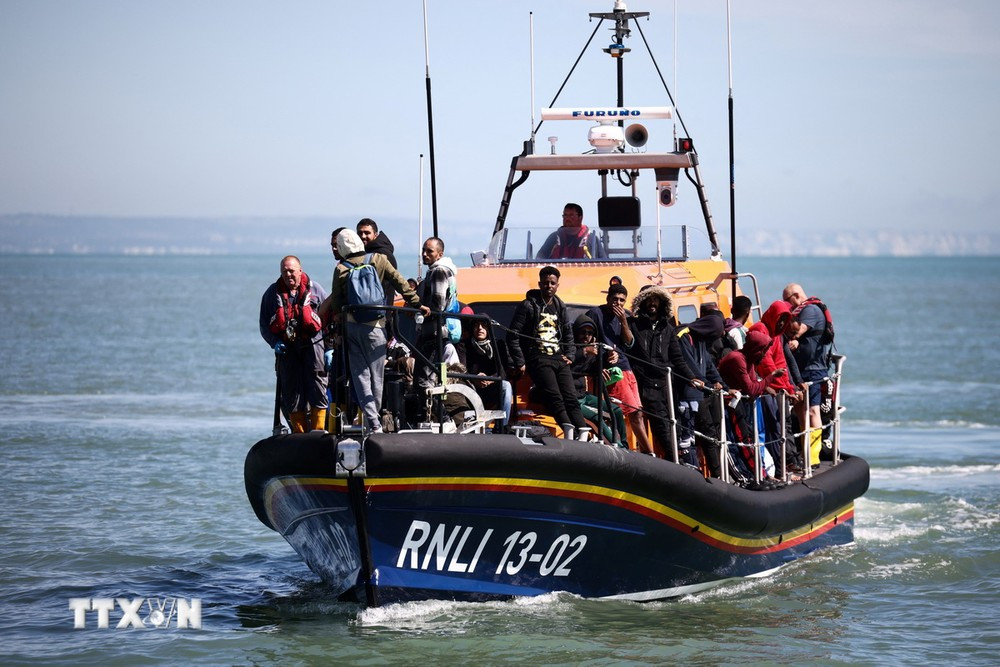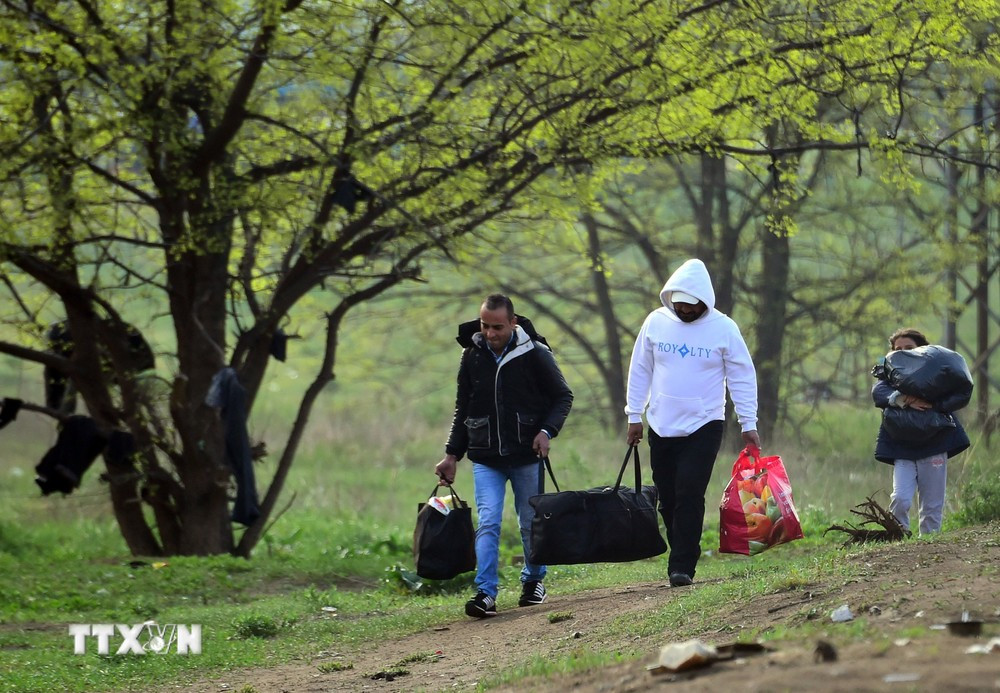With the new treaty, can the EU rise to the common challenge together, proactively deciding who comes to the EU, while ensuring border management and the basic rights of migrants?

The European Parliament has just approved the European Pact on Asylum and Migration, with the central criteria being “solidarity and responsibility,” an event that German Chancellor Olaf Scholz described as “historic.”
But whether Europe has found a real solution to the migration problem and lived up to its responsibilities remains an open question.
Presented by European Commission (EC) President Ursula von der Leyen on September 23, 2020, the above treaty is the biggest reform of the European Union (EU)'s immigration and asylum rules in more than a decade.
After a lengthy negotiation process due to the extremely complex, divisive issue and highly politicized negotiations, the treaty was passed with a narrow majority and largely thanks to the abstentions of lawmakers who disagreed with the text but wanted the treaty to be adopted.
The new pact is a set of 10 instruments (six regulations, three recommendations and one directive) designed to strike a balance between border control and solidarity in the reception of migrants on European soil, but the overall philosophy remains that countries of entry are largely responsible for reception.
Specifically, Brussels plans to act on three main elements.
The first is faster processing at EU borders. Migrants will find out quickly – within a maximum of seven days – whether they can stay in Europe or have to leave, through “screening” on entry.
The second is closer cooperation with countries of origin and transit to restrict migrant arrivals and combat migrant smuggling networks.
In particular, the EU aims to change the way it builds international migration partnerships with external countries and establish a more voluntary framework for European labour migration policy.

Third, the new solidarity mechanism is more flexible. Each country will have to contribute to the solidarity mechanism but in a less restrictive way.
While resettlement (transferring asylum seekers between EU member states) was previously mandatory, it will now be voluntary. They can take in asylum seekers, or provide money or other resources to “frontline” countries like Italy and Greece.
For more than a decade, the migration issue has been at the forefront of all European security policies, but has not been resolved due to different visions among countries.
Along with that, the EU is assessed as lacking vision and action for sustainable goals, when it only focuses on preventing migration, while the fundamental solution of resettling migrants is almost left open.
Europe's migration policy is being challenged, as massive irregular migration flows, with 46,000 people since the beginning of 2024, and a record number of asylum applications, reaching 1.14 million applications in 2023, seriously destabilize cooperation between member states.
So the question is whether a new collective plan can replace decades of isolated responses by member states.
For the far left, the reforms – including the construction of border centres to detain asylum seekers and send some to “safe” countries outside, or EU agreements with third countries to control migration flows – are too harsh, incompatible with European values of compassion and human dignity.
Far-right lawmakers, meanwhile, complained that the reform did not go far enough to stop illegal immigrants, who they accused of sowing insecurity and threatening to "submerge" European identity.
Meanwhile, experts point out that the new system, although based on shared responsibility, will be much more complicated and not all member states are inclined to make the effort.
For example, the new treaty includes new arrangements on burden-sharing quotas, which require governments to financially compensate frontline countries if they refuse to take up quotas.
But Hungary and Poland were quick to say they would not accept the new solidarity rules, while far-right, far-left and green parties as well as NGOs pledged – for different reasons – to continue the fight.
Other points of contention include provisions that would allow asylum seekers to be sent to “safe” third countries to have their claims processed, like the recent deal between Italy and Albania.
Another point is that the new EU treaty does not detail how people who do not qualify for asylum will be deported.
The EU lacks refugee return agreements with many countries and has struggled to convince some countries in the Middle East and Africa to take in deported migrants.
In addition, the bloc’s plan to combat illegal immigration is not yet complete. Having dealt with the tip of the iceberg, EU leaders want to step up efforts to finalize agreements with their neighbors in North Africa and the Middle East to jointly tackle the root causes of migration.
However, everything depends on the results of the European Parliament elections next June.
So far, the EU has signed deals with Tunisia, Mauritania and Egypt, involving large sums of money to help countries control migration flows.
In fact, the EU's agreement on a particularly sensitive issue like migration has been considered a success, especially in the context of the International Organization for Migration (IOM) recently warning that the journey from Libya or Tunisia across the Mediterranean to Europe is the most dangerous migration route in the world.
According to the IOM, 2023 was the deadliest year for migrants in the past decade, with 8,541 deaths, partly due to a sharp increase in drownings in the Mediterranean.
In theory, with the new pact, the EU will now distribute the migrant burden among its 27 member states, forcing other member states to help those most affected by the influx.
The treaty sets out rules favorable to legal immigration, using legal immigration to combat human trafficking.
However, the new rules will start to apply from 2026, after the EC sets out how to implement the treaty in the coming months.
The 27 EU member states will have two years to introduce corresponding changes in their national laws.
It remains to be seen whether the EU can rise to the common challenge together, proactively deciding who comes to the EU and under what circumstances, while ensuring border management and the basic rights of migrants.
TB (according to VNA)